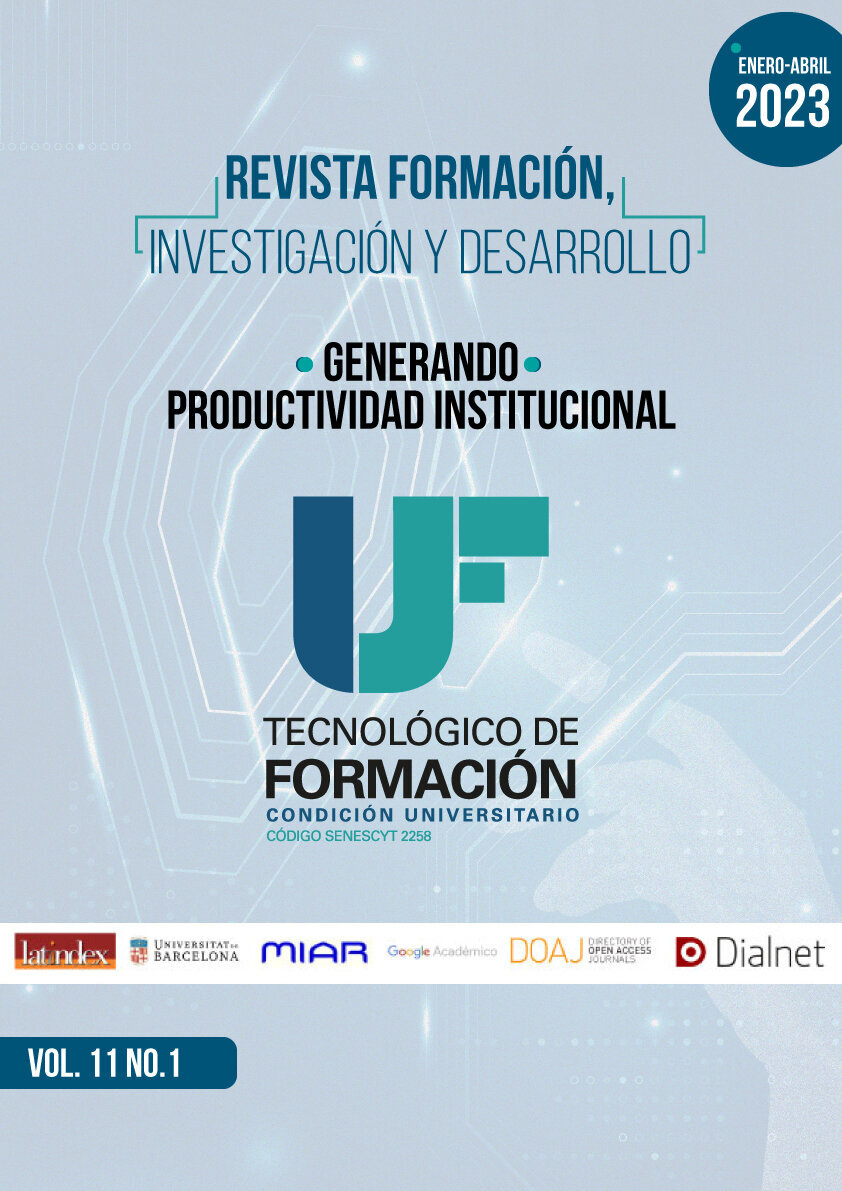Methodology for the forensic analysis of images of storage units
Main Article Content
Abstract
The main objective of this article is to present a Forensic Analysis Methodology for specialists in computer
expertise whose activities in judicial assignments are in the investigation of storage peripherals in Linux or
Windows Operating Systems; for the purpose of obtaining digital evidence. The structure that makes up
the stages of the methodology are based on the criteria established within the RFC 3227 standard for the
guidelines that allow the collection of evidence and its standardized storage in the treatment of security
incidents; UNE 71506:2013 allowed, through the forensic analysis methodology, to guide the development
of the stages; for the preparation of the expert reports, support was obtained in the UNE 197010:2015, which has several criteria for the preparation of opinions in the field of ICT and to strengthen the methodology, the UNE-EN ISO/IEC 27037 was analyzed: 2016 to include several of the standards that allow the processes of identification, collection, acquisition and preservation of potential digital evidence to be carried out. The results obtained conclude that traditional methodologies can improve the investigative and procedural experience of the specialist through the implementation of flowcharts without losing quality in the process.
Article Details

This work is licensed under a Creative Commons Attribution-NonCommercial-ShareAlike 4.0 International License.
Este trabajo tiene licencia DE Atribución/Reconocimiento-NoComercial-CompartirIgual 4.0 Internacional. CC BY-NC-SA 4.0.
How to Cite
References
Cajo, I. M. H., Pucuna, S. Y., Cajo, B. G. H., Coronado, V. M. O., & Orozco, F. V. S. (2018). Estudio comparativo de las metodologías de análisis forense informático para la examinación de datos en medios digitales. European Scientific Journal, 14(18), 40-45. 2.
Cajamarca, B. G. L., & Lima, J. S. G. (2018). Desarrollo de una guía metodológica para el análisis forense en equipos de cómputo con Sistema Operativo Mac OS X. Revista Publicando, 5(14), 24- 67. 3.
Calderón, F. A. C., & Martínez, M. R. A. (2020). Guía integral de empleo de la informática forense en el proceso penal de Ecuador. Universidad y Sociedad, 12(1), 182-190.
Cano, J., 2009. Computación forense descubriendo los rastros informáticos. En: Computación forense descubriendo los rastros informáticos. Editorial Alfa Omega, México, 1-7, 153-287. 5.
Cano M. (2009). Jeimy en Computación Forense: Descubriendo los Rastros Informáticos, Editorial ALFAOMEGA, Primera Edición, México, 2009, pp.10
Carrier, B., E. Spafford, 2004. An event-based digital forensic investigation framework. Center for Education and Research in Information Assurance and Security - CERIAS Purdue University, West Lafayette, Indianapolis, USA. http://www.dfrws.org/2004/day1/Carrierevent.pdf
Castro Guerra, C. D. (2014). Análisis y aplicación de software para la recuperación forense de evidencia digital en dispositivos móviles android. Quito, Ecuador: Pontificia Universidad Católica del Ecuador.
DFRW, 2001. A road map for digital forensic research. New York. Disponible en http://www.dfrws.org/2001/dfrws-rm-final.pdf.
Eloff, J.H.P., M. Kohn, M.S Olivier, 2008. Information and computer security architectures (ICSA). Research Group. Department of Computer Science, University of Pretoria, South Africa. http://icsa.cs.up.ac.za/issa/2008/Proceedings/Full/25.pdf.
Hitchcock, B., Le-Khac, N.-A., & Scanlon, M. (2016). Tiered forensic methodology model for Digital Field Triage by non-digital evidence specialists. Digital Investigation, 16, S75-S85. https://doi.org/10.1016/j.diin.2016.01.010
Jaimes, L. M. S., & Fuentes, A. S. F. (2012). Metodología para el análisis forense en Linux. Revista Colombiana de Tecnologías de Avanzada (RCTA), 2(20).
Larrea Ronquillo, J. S. (2016). Estudio e Implementación de Metodología de Análisis Forense Digital Aplicables en un Laboratorio de Informática Forense en la Carrera de Ingeniería en Networking y Telecomunicaciones (Doctoral dissertation, Universidad de Guayaquil. Facultad de Ciencias Matemáticas y Físicas. Carrera de Ingeniería en Networking y Telecomunicaciones).
Mateus, J. C., Aran-Ramspott, S., & Masanet, M.-J. (2017). Análisis de la literatura sobre dispositivos móviles en la universidad española. RIED - Revista Iberoamericana de Educación a Distancia, 20(2), 49-72.
Oquendo, H. G. (2022). Evaluación de herramientas de software libre, para el sistema operativo Windows, en la adquisición de evidencias de la memoria RAM. Publicaciones e Investigación, 16(1).
Pineda Vaca, A. E. (2016). Diseño de un modelo de análisis forense informático en el Honorable Gobierno Provincial de Tungurahua (Bachelor's thesis, Universidad Técnica de Ambato. Facultad de Ingeniería en Sistemas, Electrónica e Industrial. Carrera de Ingeniería en Sistemas Computacionales e Informáticos). 16. Rico-Bautista, D., & Rueda-Rueda, J. S. (2016). La informática forense en dispositivos Android. Revista Ingenio, 9(1), 21-34.
Rosero Paredes, D. S. (2019). Diseño de una metodología de recolección de evidencia digital para análisis forense de unidades de disco duro, basada en la norma ISO/IEC 27037: 2012.
Rueda-Rueda, J. S., Rico-Bautista, D., & Florez-Solano, E. (2019). Guía práctica abierta para el análisis forense digital en dispositivos Android. RISTI - Revista Ibérica de Sistemas y Tecnologías de La Información, 18, 442-457.
Satti, R. S., & Jafari, F. (2015). Domain specific cyber forensic investigation process model. Journal of Advances in Computer Networks, 3(1), 75-81.
Tugnarelli, M. D., Fornaroli, M. F., Santana, S. R., Jacobo, E., & Díaz, F. J. (2017). Análisis de metodologías de recolección de datos digitales. In XIX Workshop de Investigadores en Ciencias de la Computación (WICC 2017, ITBA), Buenos Aires.

